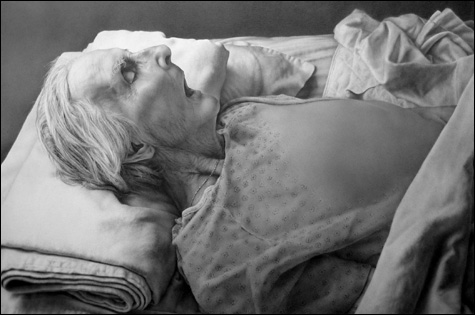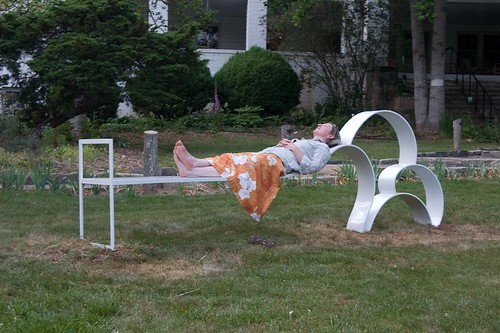 |
| Shayna Bicknell, Road, 2011 |
Katie seemed a little nervous but I thought she did a lovely job talking about the main concepts behind her work. I loved how she approached the interiors as a series of color comparisons, letting the forms and shapes appear from these interacting relationships. This mindset reminds me a lot of Brian Chu's approach to painting. I liked how she pointed out that her kitchen triptych incorporated both natural and fluorescent light. Besides the wonderful fuzzy quality of her pieces, I most enjoy her unique perspective and the curving of rooms/ceilings that results.
I liked how Shayna compared her different approaches to her smaller paintings as opposed to her larger one that was in the show. It was interesting to me that she felt more comfortable with the smaller works because I often feel like small works can be hard to do, as you have less space to work with and you need to do more with less. I think her command of color is pretty great--my favorite piece was her large work of the stairwell outside the service building.



































